|
프로토코스 (Protocoss) - PC-DOS (April 30th, 1996)
|
|
불기둥 크레센츠 (Bulgidung Crescents) / Astrocounter of Crescents - PC-DOS (April 1996)

Astrocounter of Crescents
|
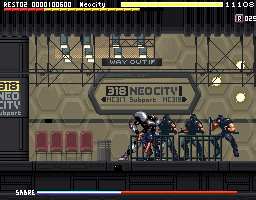
Astrocounter of Crescents
|

Astrocounter of Crescents
|
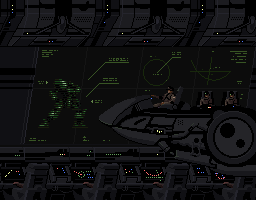
Astrocounter of Crescents
|
|
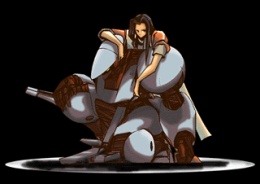
Cover artwork
Similar to Protocoss, Astrocounter of Crescents was also one of the odd gems among Korean games, coming by unknown developers that didn't have much of a portfolio yet. This was all the more impressive as the developer Object Square Team consisted of only two people (although the music was outsourced to TeMP): Kim Donggun and Yi Eunseok, two students of the computer science program at KAIST1, who formerly were only known for the freeware Parodius homage 85 Doeeossuda. The extensive particle effects are a bit taxing on system speed, which can still be an issue when running it through a virtual machine nowadays. There is also a problem with DOSBox not supporting the programming tricks used fro the scrolling, which is supposed to be very smooth, but turns out really choppy in the emulator. But otherwise the visual impression is ace.
The level design is not too elaborate, but mean enemy placement and in result the required tactical approach prevent the game from ever getting boring. Crescents is very hard, but after the Game Over, one can always start on the same stage, so frustration is kept to a minimum. There is no saving function, however, so the nine stages have to be played in one sitting to see the ending. The mecha the player is in control of is mostly built for melee fighting, and there are various different attacks. Controls for those are easy to pull off, only the stab is a bit too easy, as it just requires pressing the attack button while walking in any direction. This results in many accidental stab attacks, and the animation keeps the mecha vulnerable for quite a long time when used in the wrong situation.
For a sidescrolling action game, Astrocounter of Crescents is quite heavy on the story, but of course all the dialogue, which is represented next to hi-res character portraits, is in Korean, so for most non-Korean players this would mean just a lot of text boxes to click through. That isn't too much a problem, though, as it gives opportunity to listen to the awesome soundtrack by the famous team TeMP (nowadays called SoundTeMP).
Samsung reported that the game was quite successful, and the initial print run of 5,000 copies sold out in less than a month2. It is not known whether a second print followed, but it appears there was a recall for the discs because of a jokingly insulting message Kim Donggun left in for his partner to stumble upon during testing, but forgot to remove it in the final version3.
In 2002, Mobile Nature ported the game to cellphones4, although it is hard to imagine that much of the original has been left intact during those early years of mobile gaming. Both Kim Donggun and Yi Eunseok have now leading positions at Nexon's devCAT studio, creators of the Mabinogi series5.

Astrocounter of Crescents (Mobile)
|
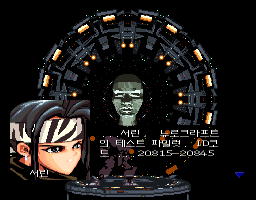
Astrocounter of Crescents
|

Astrocounter of Crescents
|

Astrocounter of Crescents
|

Astrocounter of Crescents
|
|
|
|
루어낚시 (Lure Nakksi) / Lure Fishing - Windows (1996)
헬로쏘가리 (Hello Ssogari) - Windows (1996)
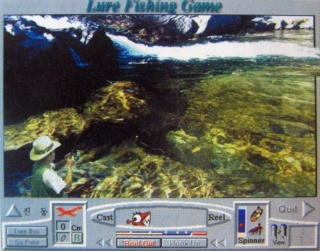
Lure Fishing
|
|
The lucrative (in Korea) fishing game market wasn't left to Taff alone. The competing product by PI Soft could even boast with Windows and high resolutions in a time when the Nakksiwang series were still DOS VGA games, but nonetheless never reached the popularity of the latter.
|

Hello Ssogari
|
|
|
|
다크니스 (Darkness) - PC-DOS (1996)
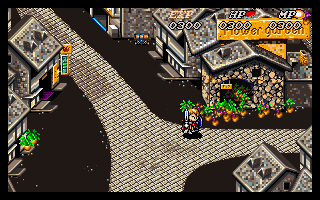
Darkness
|
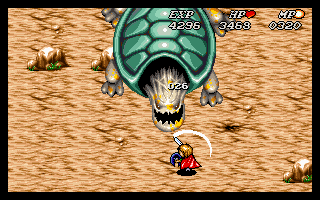
Darkness
|
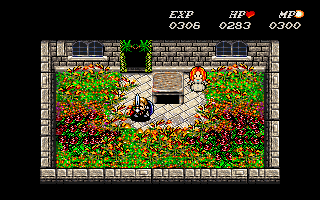
Darkness
|
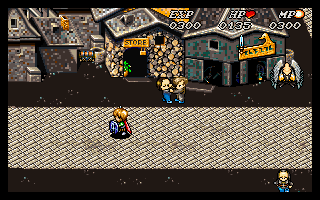
Darkness
|
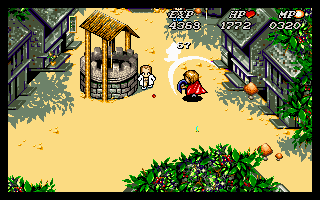
Darkness
|
|
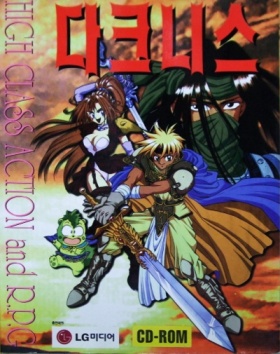
Cover
Some would call Darkness an action RPG, but "little programmed mess" would be a much more befitting moniker. The string of bad design decisions already starts with the copy protection, where five statues have to be hit with a weapon from left to right a certain number of times. However, a bunch of enemies crawls just in front of them hitting the protagonist while trying to activate the statues, of course when one instinctively tries to hit them back, it's very easy to accidentally hit the statues instead, as hit detection is very rough. Then the game just drops the player in a city without a tutorial or at least a first basic instruction of what to do. Wandering around aimlessly, one eventually stumbles upon a cave and at its end a giant turtle as the first boss. When one gets there too fast, however, there's not the slightest chance to beat it, because it's radically fast not just for a turtle, and each of its attacks may randomly drain either about 50 or 500 HP, whereas the starting maximum is 300. So that means going back to do some grinding, but players that already saved on this map are SOL, as the entry is blocked (not visually, though, there's just no exit trigger).
Grinding fortunately doesn't take much time, so after about an hour the little hero is ready to face the turtle. Not thanks to the enemies, though, which at that point only give 1-2 EXP upon defeat. Much more lucrative is plundering chests, which respawn with each re-enter in an area just as the enemies do and besides healing items contain EXP upgrades for up to 100 points. Even cutting grass brings faster results. Fighting enemies gets also more annoying as the game processes, especially when it comes to monsters with ranged attacks. The hero is equipped with a bow and a boomerang as well, but their use is paid for in hit points, and the latter also has a ridiculously short range. Finally there's a spinning special attack, which is completely useless as it never hits the enemy.
To make things even worse, once the vicious turtle is finally disposed of, the world opens up into a convoluted maze of huge areas, giving no purpose or guidance that goes beyond "save the world" and "don't get lost in the forest". Exit and entry points make no sense whatsoever and are all over the place don't exactly make orientation easier, neither do the countless invisible passages. The box art shows three main characters and a maskot type animal-thing, but one only starts with the boy hero type alone, while the introduction of the others comes well beyond the point where any sane person's patience with this game is at an end.
Darkness remains the only game of the small development team Dot&Bit. Soon after its release, a sequel was advertised, but no more than some artwork was ever seen of it.
|

Darkness
|
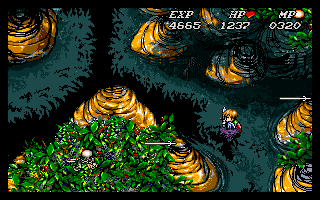
Darkness
|
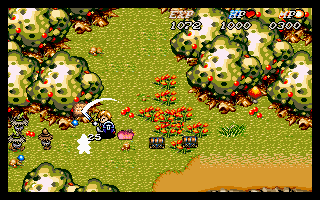
Darkness
|
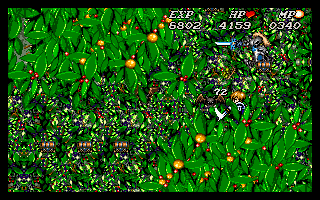
Darkness
|
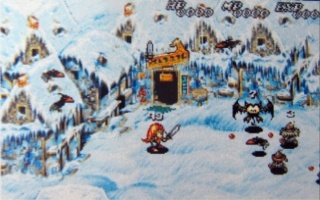
Darkness (preview)
|
|
|
|
트레이서 (Tracer) - PC-DOS (1996)

Cover
|
|
TEXT
|
|
|
|
지새는 달 (Jisaeneun Dal) - PC-DOS (1996)
|
|
귀천도 (Gwicheondo) / The Gate of Destiny - PC-DOS (1996)
|
|
샤토 ~디토의 보물을 찾아서~ (The Chateau: Dito-ui Bomul-eul Chajaseo) - Windows (1996)
|
|
뮤턴트 DNA (Mutant DNA) - PC-DOS (March 1996)
|
|
고리아스 (Goliath) - PC-DOS (1996)
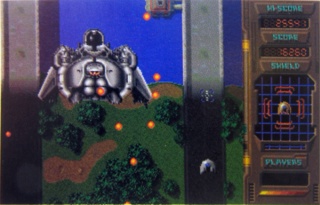
Goliath
|
|
Vertical shooting game by Samwon MIT. Not much is known about this.
|
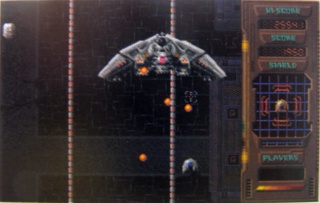
Goliath
|
|
|
|
씽큐 (Think Q) - PC-DOS (November 1996)

Think Q
|
|
Among the many games Dongsung Joycom announced, Think Q was one of the few that actually saw a release. At first it looks like a blatant clone of Makkoya's Spread Out series thanks to the red and blue colored blobs, but the rules to Think Q are far more elaborate. It's so complex, actually, that it's hard to understand just by textual descriptions in Korean, so a further description has to wait until the game itself can be retrieved.
|
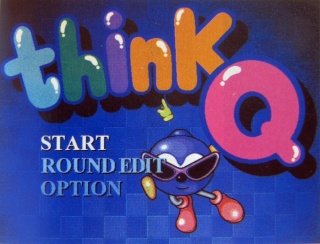
Think Q
|
|
|
|
쥬라기 원시전 (Jyuragi Weonsijeon) /Jurassic War / Jurassic Primitive War - PC-DOS (1996)

Jurassic War
|
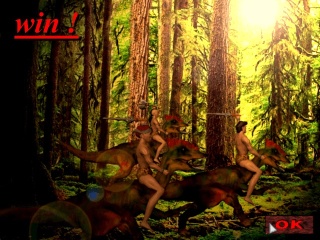
Jurassic War
|

Jurassic War (demo)
|
|
This RTS by a developer named TRIC (Tranquil Revolt in Computer) puts the player at the top of one of eight prehistoric tribes, each with their own specialty. The Romack employ rangers able to hunt enemies without much danger, which also serve as teleporting magicians, the martial Masai are masters of combat and can produce a wide array of weapons and shields, whereas the Tyrano command over dinosaurs (quite the biblical creationist setting here) and so on. The variety of units per tribe is limited, but eventually one learns to capture the enemy's sanctuary and thus pacify them under one's own banner, opening access to ever more different troops. The single player campaign leads each tribe to successive conquests against the others, until the whole population is unified.
About a year before its eventual release, TRIC uploaded a demo version, which still ran in 320x240 VGA graphics with pixel art instead of the final high res rendered visuals and looked rather close to the first Warcraft. While the graphics have been fully updated, the clunky, unintuitive interface still betray's the game's early roots and makes coordinated movements quite difficult to pull off. The only ressource in the game is meat gained by hunting. There's no way to automate this, so the player is always occupied killing enemies and carrying the gained food back to a storage, which gets tedious fast.
In 1998, TRIC announced a sequel to the game, to be published by Wizard Soft. Before the game could be finished, however, TRIC was bought by Mips Software6. Yet the rights for the game stayed with Wizard Soft, and a part of the team left to join the publisher and start the game almost from scratch, similar to what they already did with the first game. Both games were also published in Europe.
|

Jurassic War
|
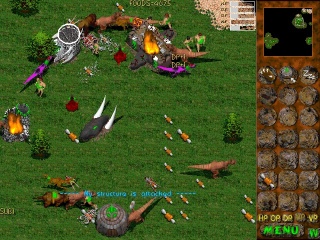
Jurassic War
|
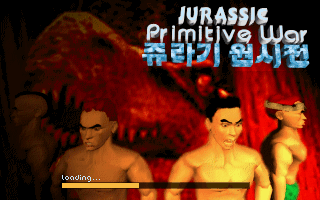
Jurassic War (demo)
|
|
|
|
生死道 (생사도 Saengsado) - Windows (December 1996)
|
|